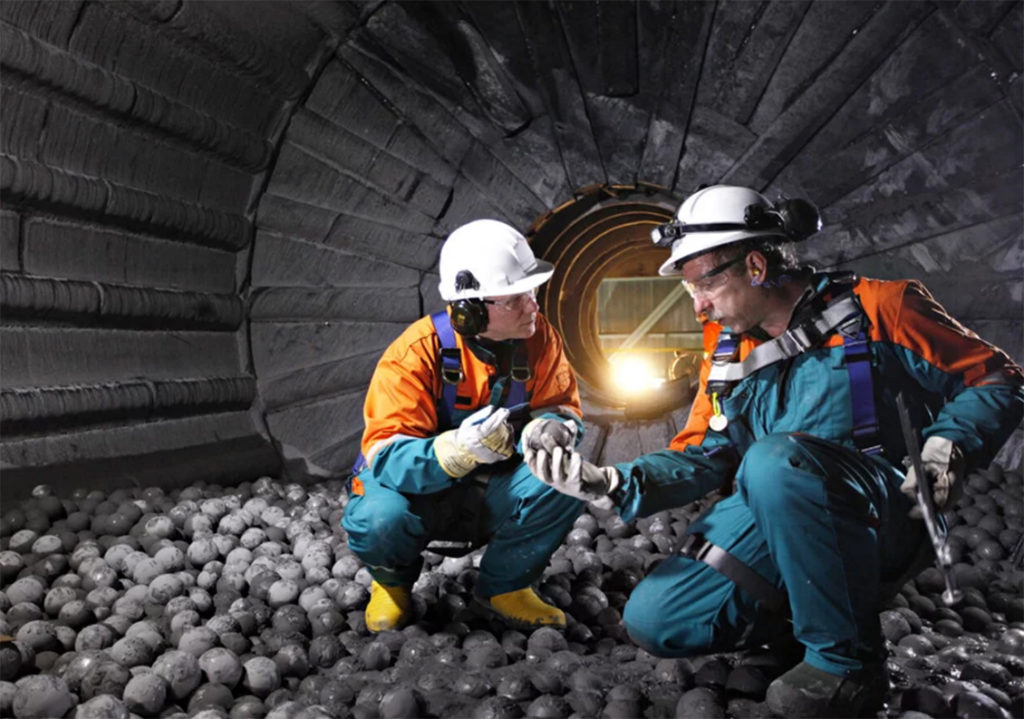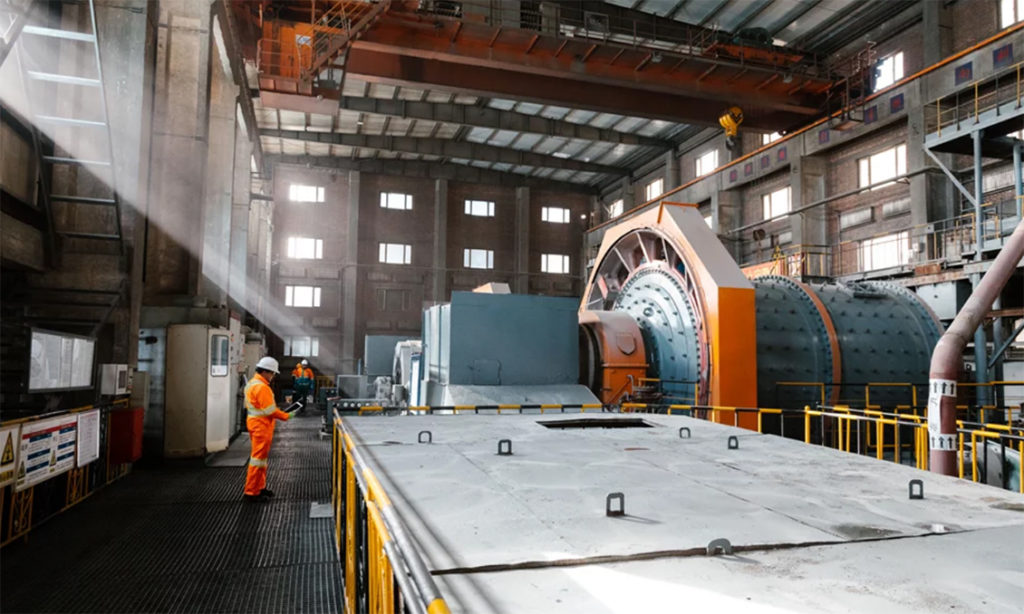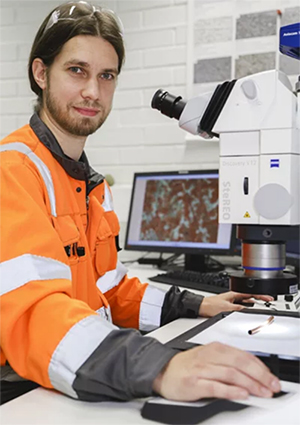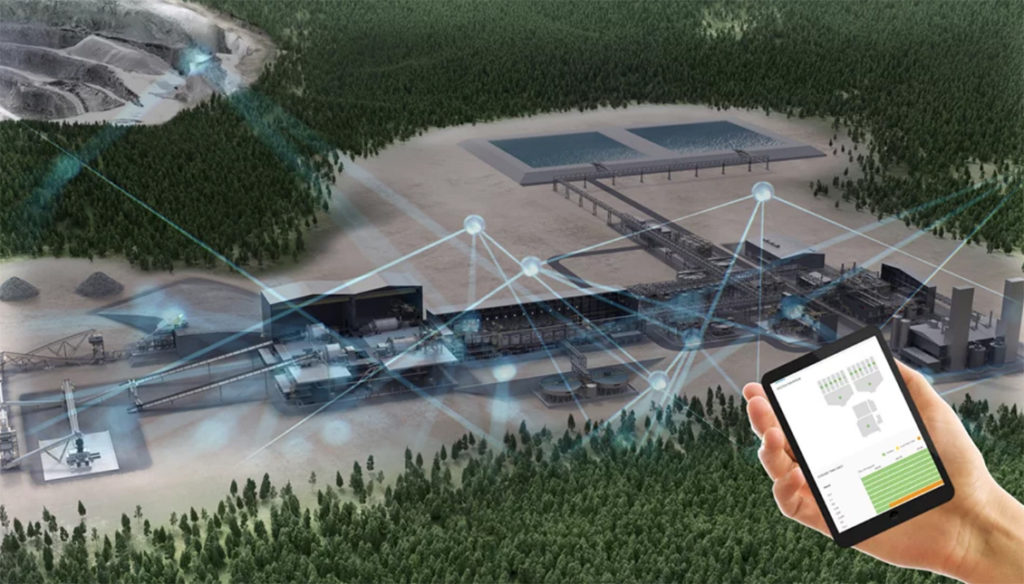Optimizing your grinding process – Remote or onsite process optimization?
To make the best use of the available installation in any mineral process operation, it is important to run an optimized plant. Traditional optimization can involve optimizing a piece of equipment on its own or taking a deeper look at the entire circuit for bottlenecks and potential improvement opportunities. Both approaches are important, but this article mainly focuses on the second option, with its more holistic view of optimization.

The initial optimization work alone however is not enough, it should be followed by consistent monitoring and measuring of all process parameters to minimize any deviations from its designated set points. To successfully optimize a process plant, theoretical knowledge of the unit process combined with process experience is key. This requires that each unit be modelled, and the process simulated. A carefully tried and tested methodology that involves planning for data collection, execution, data analysis, modelling, simulation, and solution development is required for a successful optimization process.
Why optimize?
In mineral processing, there are many reasons to optimize a circuit. The overall optimization objective in most cases is to exploit installed capital in the most efficient way possible. This can be broken down into several different sub-objectives. These can include increased plant throughput, improved product quality, maximized production of lumps in iron processing, or reduced fines in the final product for coal operations. High energy consumption is one of the biggest concerns in most operations, thus, in most optimization processes, the goal of reduced energy consumption is often a focus area. Minimizing energy consumption can sometimes even be the primary objective of the optimization process.

In recent years, providing remote optimization has become more and more important and as a result, the needed tools to properly perform optimization work has advanced. Metso Outotec has developed remote condition monitoring tools like Metso Outotec Metrics that can be used to identify potential mechanical problems in any given crushing circuit at an early stage. Metrics is a comprehensive equipment health and monitoring platform with a wide range of diagnostic and analytical reporting tools. This is used to identify potential equipment problems before equipment failure to minimize unplanned downtime and productivity losses. This improves equipment availability and reliability through early predictions to eliminate recurrent failures. This is a critical preparation step for process optimization of the process units.
Other tools essential for plant optimization include Metso Outotec RockSense to directly analyze feed particle size, Metso Outotec MillMapper to monitor maintenance and process operations to extend liner life cycles, optimize liner design, prevent liner failures, optimize throughput, and improve the performance of a grinding mill. These and many other advanced in-house remote monitoring tools provide real-time equipment and process information. This is a complete sustainable solution for optimizing an entire comminution circuit remotely.
Although a lot of value can be provided with remote optimization, time on site is equally critical in many cases. Nothing can truly replace time on site to see, touch, hear and discuss with operators. This provides a clear feel and understanding of the optimization objectives. Onsite visits provide platforms for quality data preparation and collection, as well as allow Metso Outotec process experts to assist in correcting and optimizing production processes, as well as reporting and providing follow-up activities as agreed. In addition, onsite troubleshooting consultation to solve process bottlenecks can be conducted to provide corrective actions for implementation.

Understanding before implementing
In any case, it is required that the objective is fully understood to carefully develop an approach to collect the most reliable data for model development and simulation from which solutions can be developed. Experience, plant conditions, and considerations of the circuit setup play an important role when developing this approach. Understanding plant conditions involves examining the mechanical integration of the installed units, the available instrumentation for smooth operation and process control, ore variability and availability, as well as the quality and availability of historical maintenance and process data. Historical maintenance and process data are usually analyzed to understand how the equipment, or the plant has been operating over the last few months. Opportunities for improvement can be identified from such data. Ore characterization data is also required. If not available, samples can be collected and sent to the laboratory for processing. This data and its quality are essential in the process model development.
Plan the work, then work the plan
Various process optimization approaches can be developed for different comminution circuits. However, the most general approach involves defining a clear scope of work as the first step. The desired outcome from an optimization exercise must be clearly understood by all parties involved. To a large extent, this will, guide the strategies employed when developing solutions.


The next step is to investigate the historical operations of the plant or process unit to understand operating patterns and provide an objective review by Metso Outotec specialists of current plant performance. This also involves looking at all historical process data and reports to see what changes have been previously done. This evaluation aims to identify potential bottlenecks in your production capacity and recommend appropriate actions to eliminate them. The evaluation follows a systematic inspection checklist designed specifically for the process.
A site tour is usually followed, to appreciate and better understand the installation as well as to check possible sampling points when required. It is also critical to engage and interview the metallurgical and operational crew, to grasp a better understanding of the complexities faced at site. From this, an approach to collecting more data is developed and all requirements are set out. In most cases, a plant survey is planned and agreed upon by all parties involved. This involves running the plant under the most common operating conditions and keeping the production as steady as possible for some time before samples can be collected in a milling circuit, followed by a crash-stop to collect belt cuts and conduct inspections of the mill’s internals. This can sometimes be repeated at different set operating conditions. Once all samples are successfully collected, SCADA operating data during the survey is also retrieved for use in the analysis to follow. Samples are then sent to the laboratory for ore characterization, moisture content, and particle size analysis.
A tailor-made improvement plan
These results, once received, are analyzed for quality by conducting a mass balance of the circuit. Once the quality is accepted, the results are used to develop models for the units from which the circuit can be simulated. Once the conditions at which the data was collected are modelled and simulated, then solution development can be conducted. The solution usually comprises a comprehensive evaluation of your plant’s current performance by experienced Metso Outotec specialists supported by global benchmark data and prioritizes areas for operational improvement. Once developed, the solution is presented to the technical team and the next steps are agreed upon, followed by an implementation exercise on site. This is followed by consistent monitoring of the operation process parameters to continually maintain the set conditions for consistent results. This approach described here can vary for each plant and is always considered on a case-by-case basis.
A recent example highlighting these steps of understanding, planning and then executing the plan involved a gold mine which reported a sudden and significant drop in mill average throughput from 85 tph to 55 tph. The plant had two identical streams with one mill consistently operating and maintaining 85 tph. The two mills processed the same ore type from the same stockpile and drew the same amount of power. The objective was to raise the lower throughput back to the 85 tph whilst maintaining the power draw and product size. To do so, meant that the root cause of the issue had to be clearly identified in order to implement the proper solution.
At the end of the day, understanding the issues and putting the right plan in place to solve the issue can take time but if done properly can quickly pay dividends and in addition eliminate problems from reoccurring.
ADOLPH MWALE, PROCESS OPTIMIZATION SPECIALIST
The first step involved examining the historical maintenance and operation data of the operation leading up to the drop in throughput. A more typical survey could not be conducted at the plant as it did not have the most up to date instrumentation and automation needed to maintain a steady operation. The Metso Outotec approach was to crash-stop both mills at the same peak power loads, then compare the mill loading and finally inspect the mill’s internals. A grind-out was also conducted for both mills to properly measure the ball loads. It was discovered that the mill with the lower throughput had less load compared to the other, yet the ball loading was similar. From the historical data analysis and the crash-stop data, it was also identified that the mill with less throughput drew almost the same power as the other. Historical maintenance data finally revealed a series of breakdowns with the most notable ones being the presence of vibrations and mill floating. Based on the assessment, the Metso Outotec field service team provided a mechanical solution that involved moving the mill back into the proper positioning which quickly led to the throughput level of 85 tph being restored to the underperforming mill.
At the end of the day, understanding the issues and putting the right plan in place to solve the issue can take time but if done properly can quickly pay dividends and in addition eliminate problems from reoccurring. With the advancement of tools and techniques, quite a lot of optimization work, especially in terms of looking and understanding the data can be done remotely. However, combining remote work with additional onsite support can lead to better understanding and an improved solution being put in place.

Visit Metso Outotec for more information.
ADOLPH MWALE
PROCESS OPTIMIZATION SPECIALIST
JUAN FRAUSTO
SENIOR TECHNICAL BUSINESS MANAGER

Comments